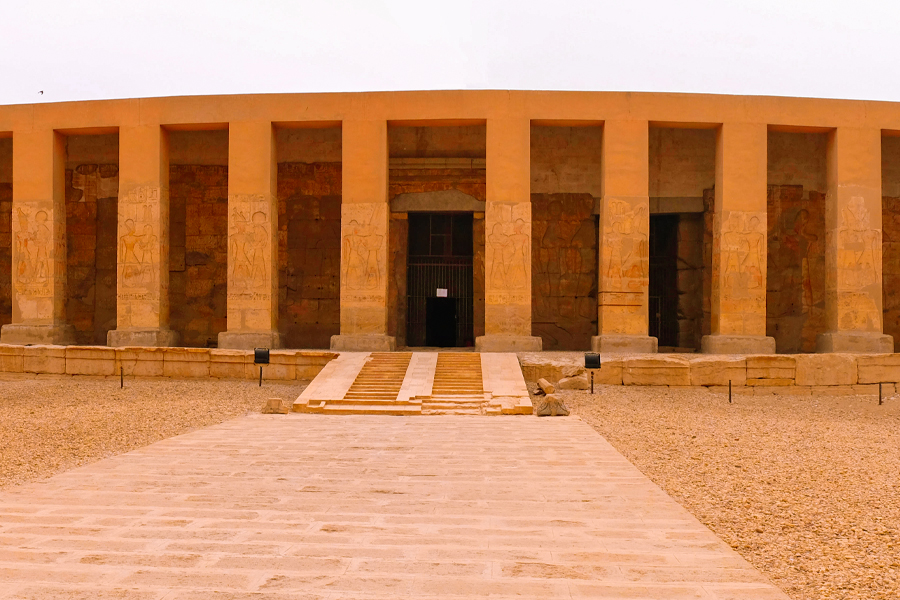All information about the Temple of Abydos:
The ancient city of Abydos is on the west bank of the Nile, about 7 kilometers west of the modern city of Polian. Even before the dynasty period, it was first mentioned in Egyptian records. No other place in Egypt was able to keep its sacred feeling for as long as it did. This was because Abydos was the holiest place for the Egyptian god Osiris.
Osiris is a key figure in Egyptian mythology and the main character in the most well-known stories about Egypt’s past. During the Middle Kingdom, Abydos was a very important city where many people went on religious trips.
Historical events leading to the construction of the Temple of Abydos:
The 12th Dynasty pharaoh Senusret I built a large building on an earlier mausoleum at Kom al-Sultan, which became known as the Temple of Osiris. During the New Kingdom, Abydos reached its peak as a holy city. Thutmose, I ordered the construction of a parquet of cedar and electricity for Osiris. Almost every pharaoh of the Eighteenth Dynasty left evidence of his devotion to this deity and built additions to the Kom Sultan Temple.
During the Nineteenth Dynasty, Abydos and its chief deity were elevated to Seti I to unprecedented heights. He built a magnificent temple with separate sanctuaries for each god, and a seventh chapel of the same size, for himself as a deity. His son and successor, Ramses II, built his temple in the north.
The most visited temples in Abydos are those built by Seti I and Ramses II in the New Kingdom. The Temple of Seti I is decorated with some of the best notable carvings of any era that can be found in the Nile Valley. The reliefs of the nearby Temple of Ramses II are so finely carved that they indicate that the temple was built early in his reign and decorated by the same artists who worked under his father, Seti I.
It seems that Seti I wished to return to the canons of orthodox Egyptian art after the dissident art movement during the Amarna period. The scenes in his temple are majestic, delicate, and conservative. The temple is built of fine-grained limestone and has many unique features.
One is a pavilion in the southwest corner of the temple, which is not typical for traditional temples. Another feature is the so-called Osirion, but its sevenfold devotion to various deities is the most unusual. In the Temple of Seti, there is a sanctuary of Osiris, Isis, and Horus – the trinity associated with Abydos; Ptah, the god of Memphis; a-huarache; Amun-Ra, and the last temple of the same group.
The tower at the entrance and the first courtyard is in ruins, and only the back of the second courtyard has been preserved. A stepped staircase led to a mastaba approaching it, and there were 12 square columns, each depicting Ramses II, embracing the principal deities of Egypt.
Osireion is a separate building and is located in the southwest behind the Temple of Seti I. Its purpose is unclear, and the architectural features are unique. Osirion is immersed in a depression at ground level. Moats surround the central hall, and around 17 rocky niches are in front of each os outcrop.
The central hall converges on the east and west via narrow staircases, then leads from the canal to the ‘island’ in the middle. The central part of the structure was built by Seti I and completed by Merneptah, son of Ramses II.
The Temple of Ramses II is well preserved and is probably one of the most beautiful temples in the Nile Valley. Some of the temple blocks have been reused during the last century, leaving only the lower part of the walls and column bases. The temple is built of fine white limestone, black granite, pink granite, red and brown sandstone, and flawless alabaster.
Unfortunately, the entrance gate and the first courtyard were destroyed. Although it is not in excellent condition, the battle scenes outside the temple can be found on the east side of the north tower and west wall.


0 Comment